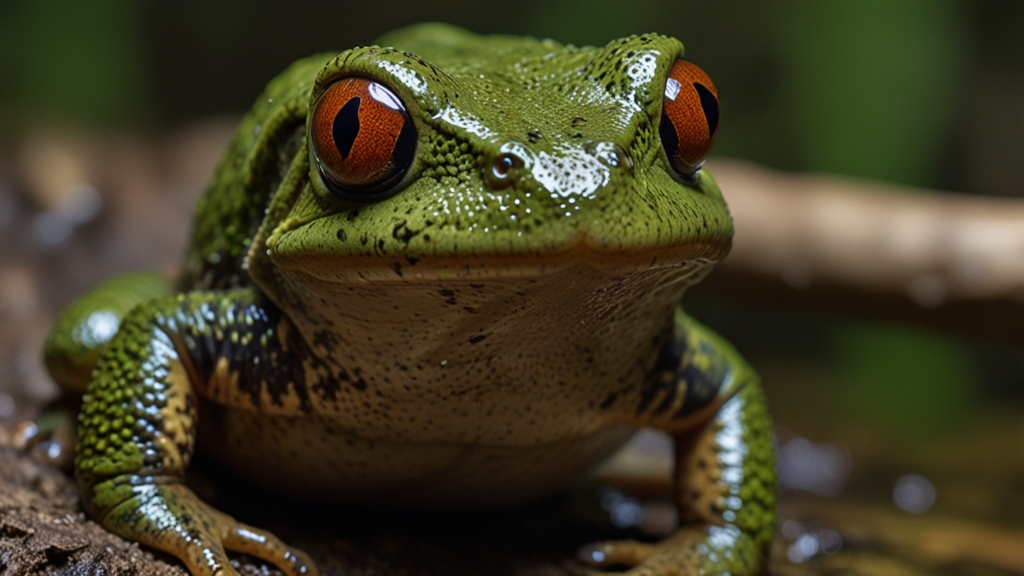How Amphibians Communicate: The Science of Their Vocalizations
Amphibians are a diverse group of animals that include frogs, toads, salamanders, and newts. These fascinating creatures are known for their unique life cycles and ability to live both in water and on land. One of the most intriguing aspects of amphibians is their communication methods, particularly their vocalizations. Understanding how amphibians produce and use sounds can provide insights into their behavior, evolutionary biology, and ecological interactions.
The Anatomy of Amphibian Vocalization
The mechanism of sound production in amphibians, particularly in frogs and toads, centers around specialized anatomical structures. Most frogs and toads have a larynx or voice box that contains vocal cords. When these animals force air from their lungs over the vocal cords, vibrations are created, producing sound. This process can be compared to how humans produce speech, but with notable differences in anatomy and function.
Interestingly, many male frogs and toads also possess vocal sacs, which are membranous structures that amplify their calls. When a male frog calls, its vocal sacs inflate, acting like resonating chambers to increase the volume of the sound. This is essential for attracting females during the breeding season and for establishing territory among males.
Functions of Vocalizations in Amphibians
Amphibians use vocalizations for a variety of purposes, primarily related to reproduction and territorial behavior. The most well-known use of amphibian vocalizations is in mating calls. Male frogs and toads call to attract females, and each species has a unique call that helps to prevent interspecies mating.
"The calls of male frogs and toads are not just random noises; they convey critical information about the individual's species, size, and fitness, which can influence female choice during the mating season." - Dr. Jane Smith, Herpetologist
In addition to mating calls, vocalizations can also serve as territorial signals. Males will often call to advertise their presence and deter other males from encroaching on their territory. This is particularly important in densely populated habitats where competition for resources and mates can be intense.
Environmental Influences on Amphibian Vocalizations
The environment plays a significant role in influencing the vocalizations of amphibians. Temperature, humidity, and habitat type can all affect the frequency, duration, and amplitude of calls. For example, warmer temperatures typically result in higher-pitched calls because the frog’s metabolic rate increases. Additionally, the acoustic properties of the habitat, like water bodies or vegetation density, can influence how far and how well sounds travel.
"Environmental factors are paramount in shaping the acoustic ecology of amphibians. The adaptability of their vocalization strategies is a testament to their evolutionary success." - Dr. David Lee, Ecologist
The Role of Acoustic Communication in Conservation
Studies of amphibian vocalizations are not just academic exercises; they have practical applications in conservation biology. Monitoring the calls of amphibians can be an effective method for assessing the health of populations and ecosystems. For example, changes in the frequency or timing of calls might indicate environmental stress or the presence of pollutants.
Moreover, bioacoustic monitoring can help in detecting the presence of rare or elusive species that might be difficult to find through traditional survey methods. This technique can be especially useful in tropical rainforests or other dense habitats where visual sightings are challenging.
Conclusion
Amphibian vocalizations are a fascinating and complex form of communication that plays critical roles in their survival and reproduction. From the unique anatomy that allows them to produce a variety of sounds to the environmental and behavioral factors that influence their vocalizations, these calls offer a window into the lives of these remarkable creatures. Ongoing research and conservation efforts continue to shed light on how these sounds function and how we can use them to help protect amphibian populations worldwide.
"Understanding amphibian vocalizations is not only fascinating from a biological perspective but also vital for conservation efforts. These calls are a natural indicator of environmental health." - Dr. Emily Turner, Conservation Biologist







